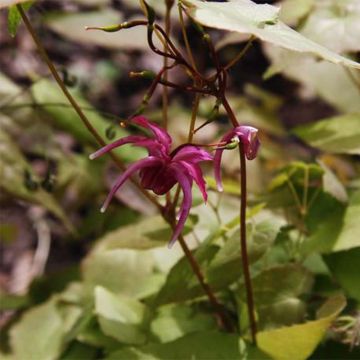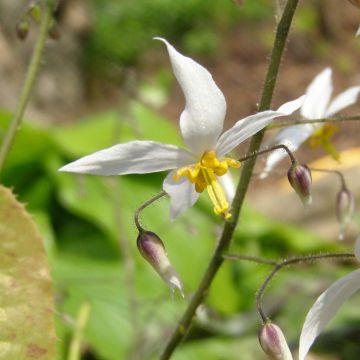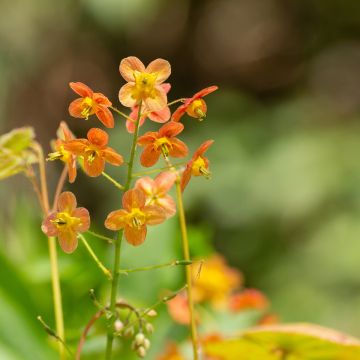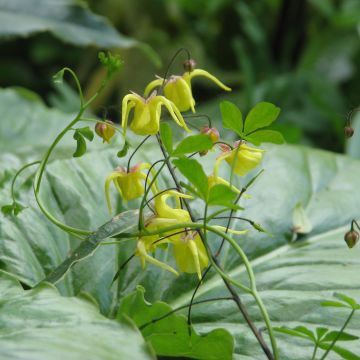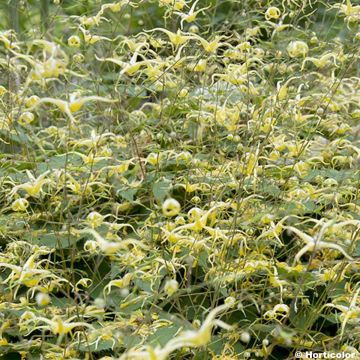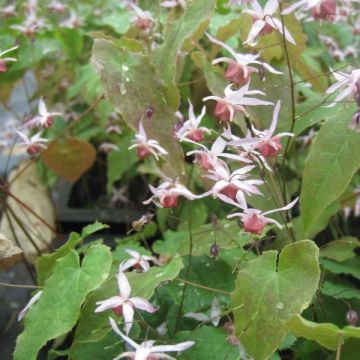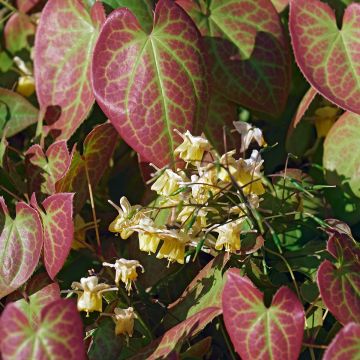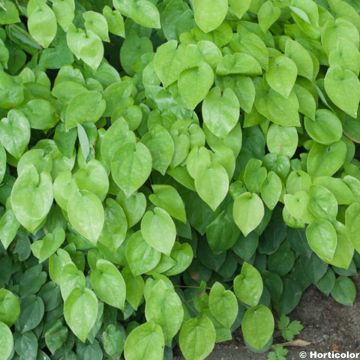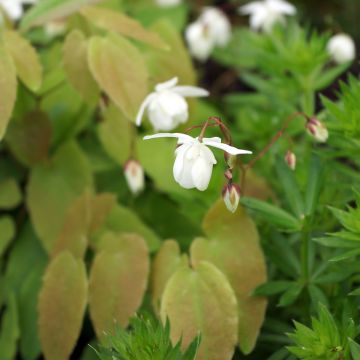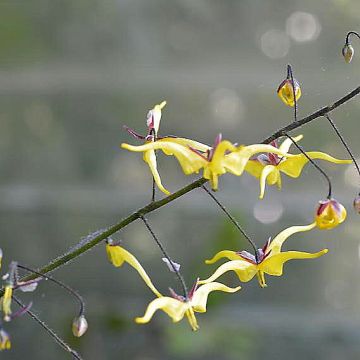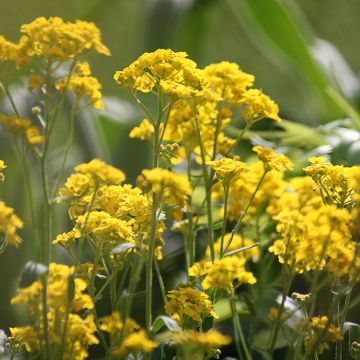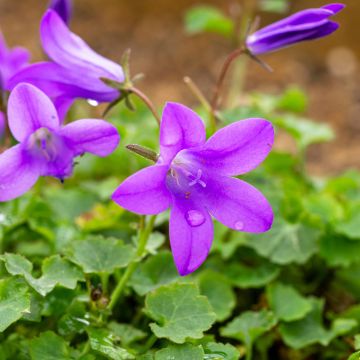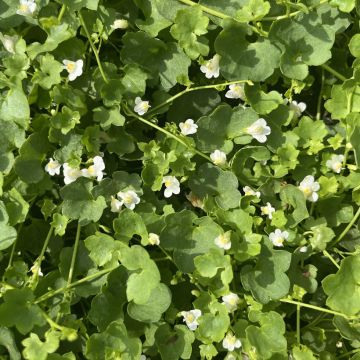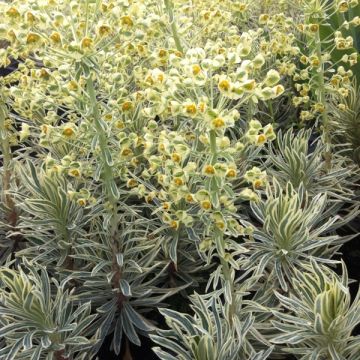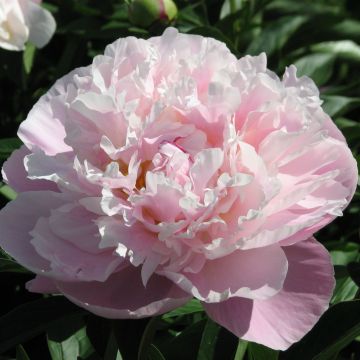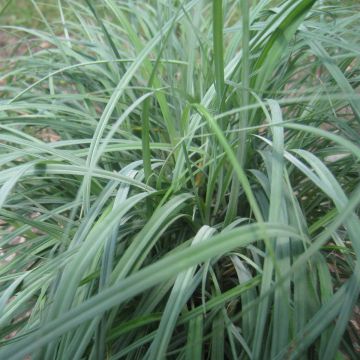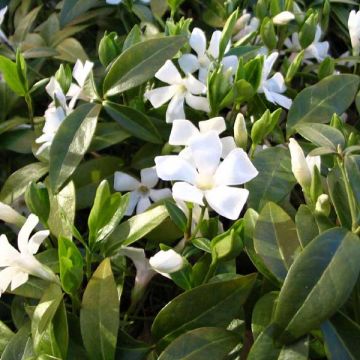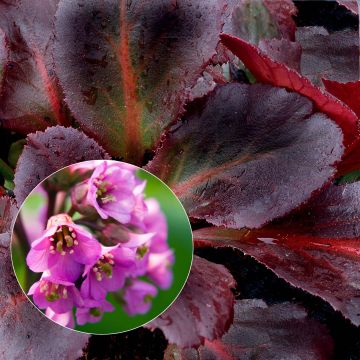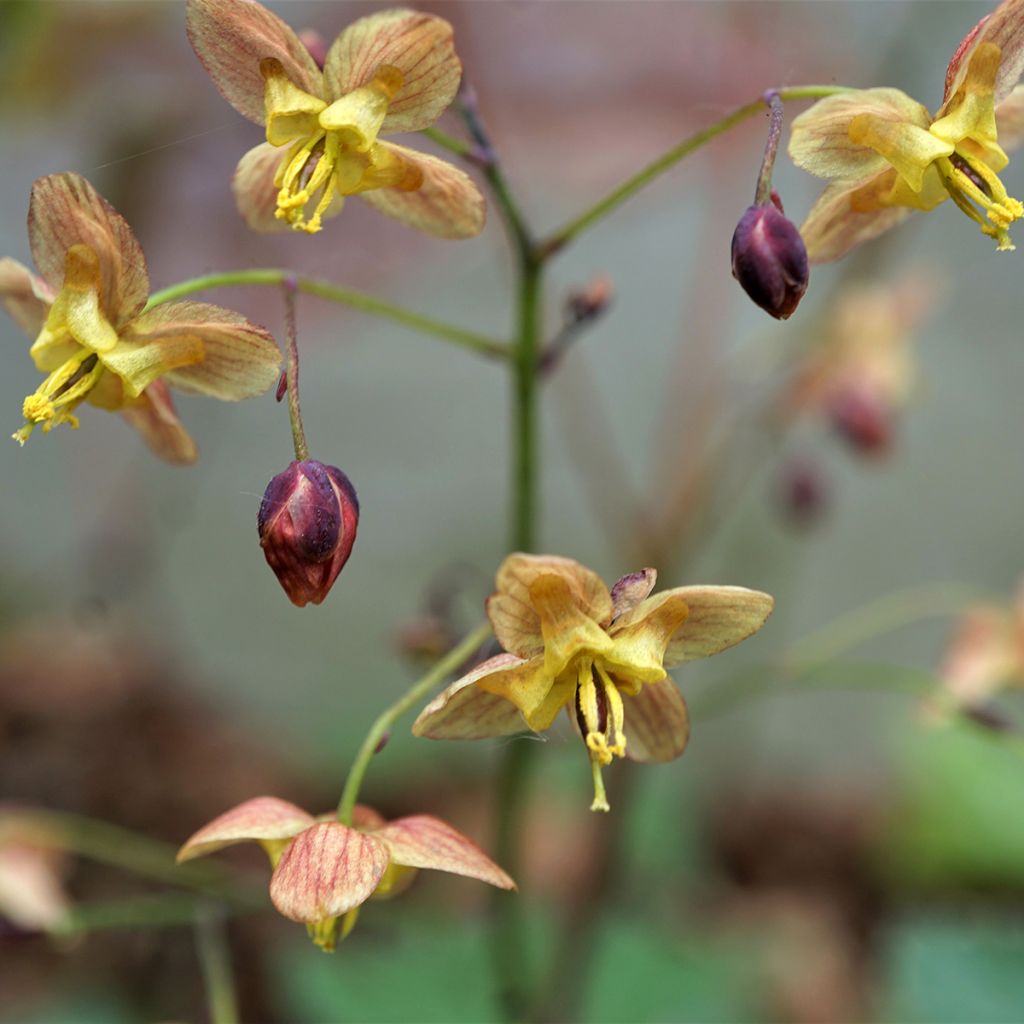

Epimedium pinnatum subsp. colchicum Black Sea - Barrenwort
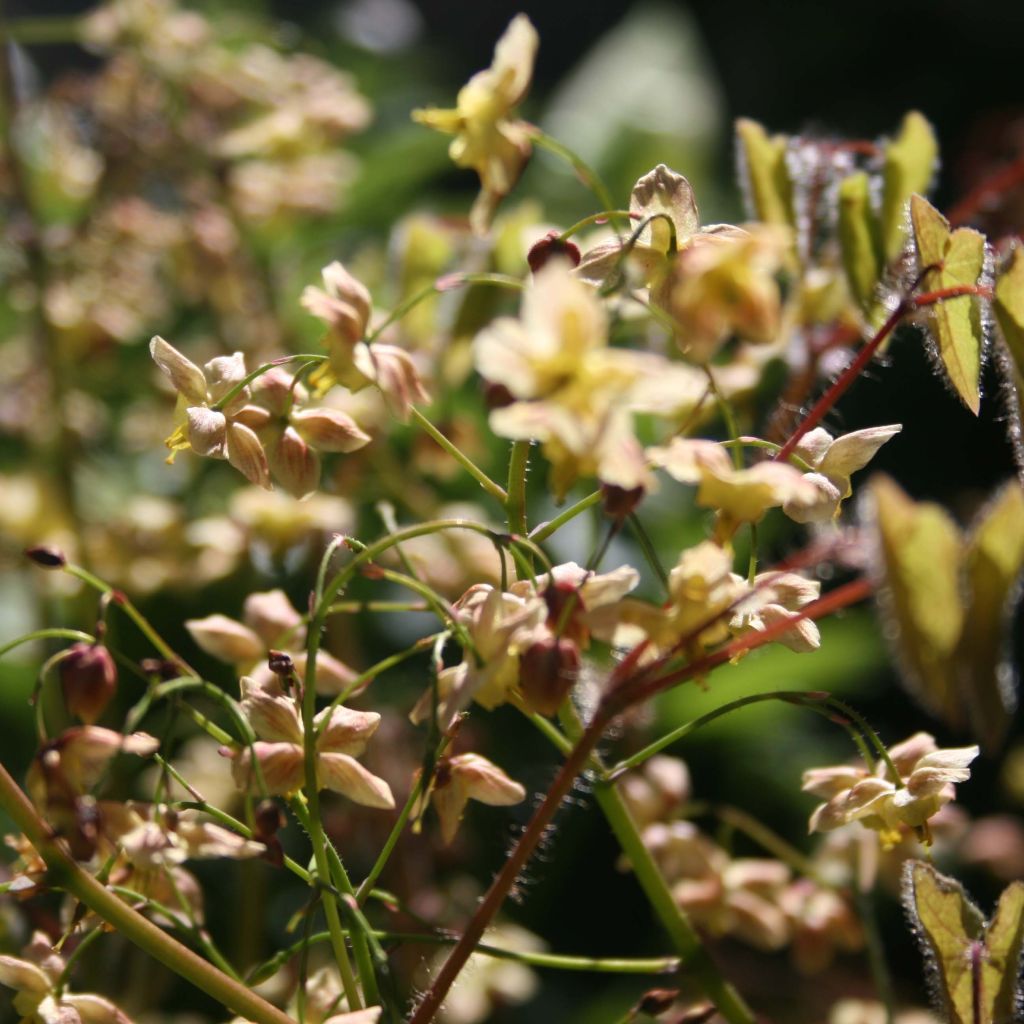

Epimedium pinnatum subsp. colchicum Black Sea - Barrenwort
Epimedium pinnatum subsp. colchicum Black Sea - Barrenwort
Epimedium pinnatum subsp. colchicum Black Sea
Colchian Barrenwort, Bishop's Hat, Fairy Wings
This item cannot be shipped to the selected country
Delivery charge from €5.90
More information
Schedule delivery date,
and select date in basket
This plant carries a 12 months recovery warranty
More information
We guarantee the quality of our plants for a full growing cycle, and will replace at our expense any plant that fails to recover under normal climatic and planting conditions.
From €5.90 for pickup delivery and €6.90 for home delivery
Express home delivery from €8.90.
Does this plant fit my garden?
Set up your Plantfit profile →
Description
Epimedium pinnatum Black Sea is a variety that will seduce with the very dark colour of its mature foliage, which is very dark chocolate purple. Its spring flowers are not to be outdone, consisting of small amber pink flowers suspended at the end of delicate stems that appear above the dark foliage, before the new leaves. An excellent groundcover perennial at the base of trees, this epimedium eventually forms a thick and dense carpet that is often evergreen in winter and decorative all year round.
Indigenous to Turkey, Northern Iran and wooded areas of the Caucasus, Epimedium pinnatum ssp colchicum is a hardy perennial plant with a low and spreading growth habit. It is a rhizomatous plant that establishes fairly quickly, forming a 20-25 cm (8-10in) tall carpet, occupying 25 to 35 cm (10 to 14in) in area. In late spring (usually in May), it produces delicate small flowers of 1 to 2 cm (0 to 1in), hanging downwards, with an unique shape that somewhat resembles columbines. They are composed of 4 yellow petals with long spurs, surrounded by orange-tinted pink sepals, perched on slender and flexible stems. Its foliage, often evergreen in winter (it may disappear during very cold winters), is divided into dentate leaflets. The young leaves are light green in colour, then they turn purple before finally becoming dark brown.
Epimedium thrives in shady situations and tolerates the root competition of other plants, which allows it to be planted at the base of trees and shrubs in regions that are not too dry in summer, including mountain areas. Epimedium 'Black Sea' is a plant for shaded areas, which are often neglected. However it would be a shame to confine it as a utilitarian groundcover plant: it will also create a beautiful light effect in a shady border accompanied by Hepatica nobilis, small Ferns, Hostas, shade-loving perennial geraniums (nodosum and macrorrhizum), Foxgloves, Candelabra Primroses, and sweet woodruff. Very popular in zen gardens, Epimedium Black Sea can also be used in damp rockeries, in pots, or as an edging. To make it an effective ground cover, plant 7/m².
Report an error about the product description
Epimedium pinnatum subsp. colchicum Black Sea - Barrenwort in pictures
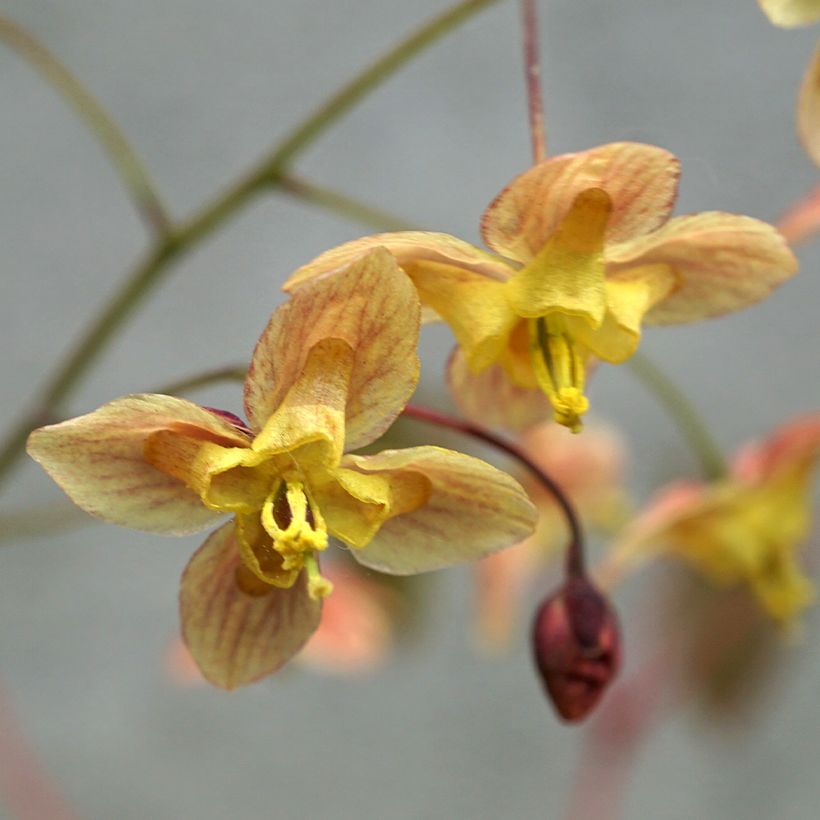

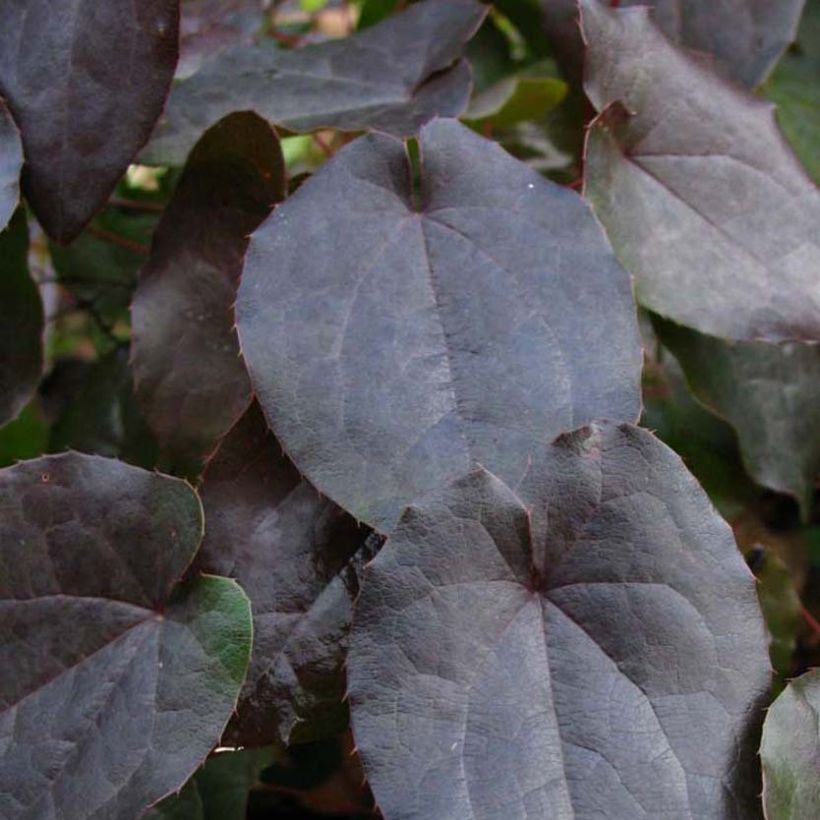

Flowering
Foliage
Plant habit
Botanical data
Epimedium
pinnatum subsp. colchicum
Black Sea
Berberidaceae
Colchian Barrenwort, Bishop's Hat, Fairy Wings
Cultivar or hybrid
Other Epimedium - Barrenwort
Planting and care
Plant Epimedium pinnatum Black Sea in autumn or spring, in a moist but well-drained soil, rich in humus, preferably with a neutral pH even though it can tolerate slightly acidic to slightly alkaline soil. It thrives in partial shade, for example at the feet of large trees. Protect it from cold winds in winter. It tolerates moderate drought once established and is not afraid of frost. To further enhance the flowers, you can cut back the old foliage in late winter before the new flowering
Planting period
Intended location
Care
-
, onOrder confirmed
Reply from on Promesse de fleurs
Spring flowering perennials
Haven't found what you were looking for?
Hardiness is the lowest winter temperature a plant can endure without suffering serious damage or even dying. However, hardiness is affected by location (a sheltered area, such as a patio), protection (winter cover) and soil type (hardiness is improved by well-drained soil).

Photo Sharing Terms & Conditions
In order to encourage gardeners to interact and share their experiences, Promesse de fleurs offers various media enabling content to be uploaded onto its Site - in particular via the ‘Photo sharing’ module.
The User agrees to refrain from:
- Posting any content that is illegal, prejudicial, insulting, racist, inciteful to hatred, revisionist, contrary to public decency, that infringes on privacy or on the privacy rights of third parties, in particular the publicity rights of persons and goods, intellectual property rights, or the right to privacy.
- Submitting content on behalf of a third party;
- Impersonate the identity of a third party and/or publish any personal information about a third party;
In general, the User undertakes to refrain from any unethical behaviour.
All Content (in particular text, comments, files, images, photos, videos, creative works, etc.), which may be subject to property or intellectual property rights, image or other private rights, shall remain the property of the User, subject to the limited rights granted by the terms of the licence granted by Promesse de fleurs as stated below. Users are at liberty to publish or not to publish such Content on the Site, notably via the ‘Photo Sharing’ facility, and accept that this Content shall be made public and freely accessible, notably on the Internet.
Users further acknowledge, undertake to have ,and guarantee that they hold all necessary rights and permissions to publish such material on the Site, in particular with regard to the legislation in force pertaining to any privacy, property, intellectual property, image, or contractual rights, or rights of any other nature. By publishing such Content on the Site, Users acknowledge accepting full liability as publishers of the Content within the meaning of the law, and grant Promesse de fleurs, free of charge, an inclusive, worldwide licence for the said Content for the entire duration of its publication, including all reproduction, representation, up/downloading, displaying, performing, transmission, and storage rights.
Users also grant permission for their name to be linked to the Content and accept that this link may not always be made available.
By engaging in posting material, Users consent to their Content becoming automatically accessible on the Internet, in particular on other sites and/or blogs and/or web pages of the Promesse de fleurs site, including in particular social pages and the Promesse de fleurs catalogue.
Users may secure the removal of entrusted content free of charge by issuing a simple request via our contact form.
The flowering period indicated on our website applies to countries and regions located in USDA zone 8 (France, the United Kingdom, Ireland, the Netherlands, etc.)
It will vary according to where you live:
- In zones 9 to 10 (Italy, Spain, Greece, etc.), flowering will occur about 2 to 4 weeks earlier.
- In zones 6 to 7 (Germany, Poland, Slovenia, and lower mountainous regions), flowering will be delayed by 2 to 3 weeks.
- In zone 5 (Central Europe, Scandinavia), blooming will be delayed by 3 to 5 weeks.
In temperate climates, pruning of spring-flowering shrubs (forsythia, spireas, etc.) should be done just after flowering.
Pruning of summer-flowering shrubs (Indian Lilac, Perovskia, etc.) can be done in winter or spring.
In cold regions as well as with frost-sensitive plants, avoid pruning too early when severe frosts may still occur.
The planting period indicated on our website applies to countries and regions located in USDA zone 8 (France, United Kingdom, Ireland, Netherlands).
It will vary according to where you live:
- In Mediterranean zones (Marseille, Madrid, Milan, etc.), autumn and winter are the best planting periods.
- In continental zones (Strasbourg, Munich, Vienna, etc.), delay planting by 2 to 3 weeks in spring and bring it forward by 2 to 4 weeks in autumn.
- In mountainous regions (the Alps, Pyrenees, Carpathians, etc.), it is best to plant in late spring (May-June) or late summer (August-September).
The harvesting period indicated on our website applies to countries and regions in USDA zone 8 (France, England, Ireland, the Netherlands).
In colder areas (Scandinavia, Poland, Austria...) fruit and vegetable harvests are likely to be delayed by 3-4 weeks.
In warmer areas (Italy, Spain, Greece, etc.), harvesting will probably take place earlier, depending on weather conditions.
The sowing periods indicated on our website apply to countries and regions within USDA Zone 8 (France, UK, Ireland, Netherlands).
In colder areas (Scandinavia, Poland, Austria...), delay any outdoor sowing by 3-4 weeks, or sow under glass.
In warmer climes (Italy, Spain, Greece, etc.), bring outdoor sowing forward by a few weeks.

































